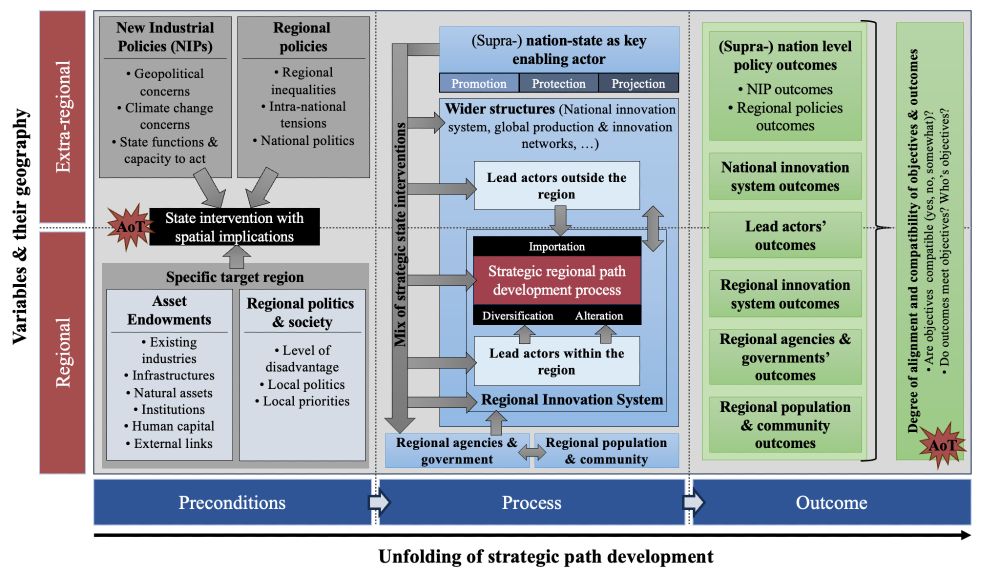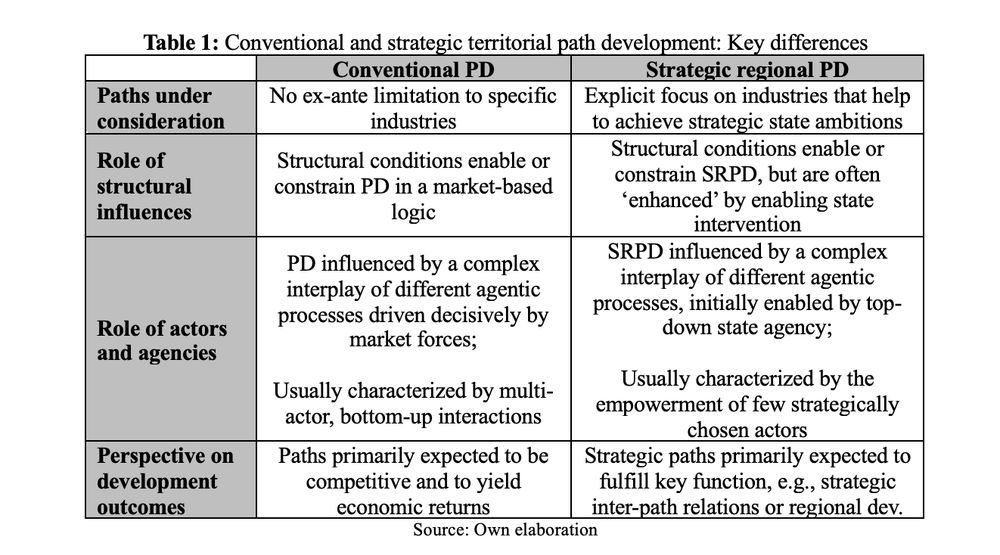Simon Baumgartinger-Seiringer
@sbaumgartinger.bsky.social
Scientist (@AIT Vienna) working on transformative innovation & industial policy. Also passionate about history, politics, football & gaming. Views my own.
𝟔 | 𝐂𝐚𝐬𝐞 𝐬𝐭𝐮𝐝𝐢𝐞𝐬 & 𝐥𝐢𝐧𝐤
Our analysis of 11 regions – incl. in-depth studies of Lower Austria & Ústí – shows how complex, uneven, and contested these processes are.
Together with @michaelatrippl.bsky.social & @balazspager.bsky.social
Our analysis of 11 regions – incl. in-depth studies of Lower Austria & Ústí – shows how complex, uneven, and contested these processes are.
Together with @michaelatrippl.bsky.social & @balazspager.bsky.social

September 16, 2025 at 7:37 PM
𝟔 | 𝐂𝐚𝐬𝐞 𝐬𝐭𝐮𝐝𝐢𝐞𝐬 & 𝐥𝐢𝐧𝐤
Our analysis of 11 regions – incl. in-depth studies of Lower Austria & Ústí – shows how complex, uneven, and contested these processes are.
Together with @michaelatrippl.bsky.social & @balazspager.bsky.social
Our analysis of 11 regions – incl. in-depth studies of Lower Austria & Ústí – shows how complex, uneven, and contested these processes are.
Together with @michaelatrippl.bsky.social & @balazspager.bsky.social
𝟓 | 𝐁𝐫𝐢𝐧𝐠𝐢𝐧𝐠 𝐢𝐭 𝐭𝐨𝐠𝐞𝐭𝐡𝐞𝐫
We argue for a transformative resilience framework: transitions depend on the interplay of inherited structures (vulnerability & preparedness) and dynamic agency (responsiveness). This matters for policy. 🧩
We argue for a transformative resilience framework: transitions depend on the interplay of inherited structures (vulnerability & preparedness) and dynamic agency (responsiveness). This matters for policy. 🧩

September 16, 2025 at 7:37 PM
𝟓 | 𝐁𝐫𝐢𝐧𝐠𝐢𝐧𝐠 𝐢𝐭 𝐭𝐨𝐠𝐞𝐭𝐡𝐞𝐫
We argue for a transformative resilience framework: transitions depend on the interplay of inherited structures (vulnerability & preparedness) and dynamic agency (responsiveness). This matters for policy. 🧩
We argue for a transformative resilience framework: transitions depend on the interplay of inherited structures (vulnerability & preparedness) and dynamic agency (responsiveness). This matters for policy. 🧩
𝟑 | 𝐏𝐫𝐞𝐩𝐚𝐫𝐞𝐝𝐧𝐞𝐬𝐬
Exposure is one thing. Capacity is another. Our preparedness index shows stark differences in how well regions are equipped with assets, resources, and capacities to build green futures. Many highly vulnerable places are also ill-prepared. 🎯
Exposure is one thing. Capacity is another. Our preparedness index shows stark differences in how well regions are equipped with assets, resources, and capacities to build green futures. Many highly vulnerable places are also ill-prepared. 🎯

September 16, 2025 at 7:32 PM
𝟑 | 𝐏𝐫𝐞𝐩𝐚𝐫𝐞𝐝𝐧𝐞𝐬𝐬
Exposure is one thing. Capacity is another. Our preparedness index shows stark differences in how well regions are equipped with assets, resources, and capacities to build green futures. Many highly vulnerable places are also ill-prepared. 🎯
Exposure is one thing. Capacity is another. Our preparedness index shows stark differences in how well regions are equipped with assets, resources, and capacities to build green futures. Many highly vulnerable places are also ill-prepared. 🎯
𝟐 | 𝐕𝐮𝐥𝐧𝐞𝐫𝐚𝐛𝐢𝐥𝐢𝐭𝐲
Many regions still heavily rely on carbon- and energy-intensive industries. We map where this legacy creates high vulnerability – places facing serious disruption risks if transitions fail to take root. ⚠️
Many regions still heavily rely on carbon- and energy-intensive industries. We map where this legacy creates high vulnerability – places facing serious disruption risks if transitions fail to take root. ⚠️

September 16, 2025 at 7:32 PM
𝟐 | 𝐕𝐮𝐥𝐧𝐞𝐫𝐚𝐛𝐢𝐥𝐢𝐭𝐲
Many regions still heavily rely on carbon- and energy-intensive industries. We map where this legacy creates high vulnerability – places facing serious disruption risks if transitions fail to take root. ⚠️
Many regions still heavily rely on carbon- and energy-intensive industries. We map where this legacy creates high vulnerability – places facing serious disruption risks if transitions fail to take root. ⚠️
Testing the framework (see below) using a semiconductor innovation zone in Québec as a case study, we conclude that success depends on aligning expectations and reconciling perspectives on its purpose across policymaking levels and involved actors.

November 29, 2024 at 2:26 PM
Testing the framework (see below) using a semiconductor innovation zone in Québec as a case study, we conclude that success depends on aligning expectations and reconciling perspectives on its purpose across policymaking levels and involved actors.
It is within this context that we propose the concept of Strategic Regional Path Development (SPRD), understood as a mechanism for (supra-) national industrial capacity-building in specific places. SPRD has several defining featrues, most importantly: it's based on top-down government interventions.

November 29, 2024 at 2:26 PM
It is within this context that we propose the concept of Strategic Regional Path Development (SPRD), understood as a mechanism for (supra-) national industrial capacity-building in specific places. SPRD has several defining featrues, most importantly: it's based on top-down government interventions.

